Mount Scopus
description: a mountain in Jerusalem, home to the main campus of the Hebrew University
39 results
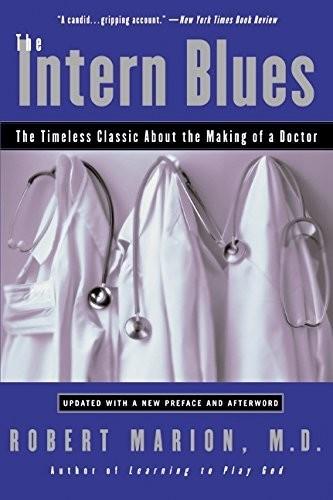
The Intern Blues: The Timeless Classic About the Making of a Doctor
by
Robert Marion
Published 1 Jan 1989
University Hospital is located about a half mile south of Jonas Bronck. “The west campus” is also made up of two hospitals: the Mount Scopus Medical Center, a huge voluntary hospital that, like University Hospital, serves as a base for subspecialists; and the West Bronx Hospital, sometimes referred to as WBH, another municipal facility that, like Jonas Bronck, provides all medical services for the indigent families of the western region of the borough. Mount Scopus and West Bronx are literally attached to each other. Although the Mount Scopus–WBH complex is immense, filling four square city blocks, the pediatric services in the two hospitals are adjacent to each other and conveniently connected by a bridge.
…
Anyway, poor little Hanson had been home maybe two weeks and had developed diarrhea again. I asked his mother why she didn’t bring him back to Mount Scopus since, after all, all his records are there, and she said, “I don’t like those doctors at Mount Scopus. They don’t know nothing. They’re all a pain in the ass.” I guess she came to Jonas Bronck because she wanted a second opinion. Very smart! Anyway, I figured I should try to get some history on his last days at Mount Scopus, so today I got in touch with Jennifer Urzo, the intern who discharged him from Infants’. I said, “I just admitted Hanson,” and I could hear her groan.
…
Everything was going fine and then, yesterday, just when I was really beginning to feel comfortable, one of the chief residents came up to me and said they’d decided to transfer me to the Children’s ward at Mount Scopus. I told her I didn’t want to go, that I was having a really good time on 6A. She said she was sorry but they were a body short on Children’s and there was an extra person on 6A that month (because we had a subintern) and there was nobody else who could be pulled. I argued a little more, but I could see there was no way I was going to change her mind. Finally I just gave up. So after figuring out 6A, I had to move over to a completely different ward in a completely different hospital, pick up a whole new group of patients, learn where the Mount Scopus labs are and where the forms are kept, and I have to meet a whole new group of nurses and probably go through another night of IVs falling out.
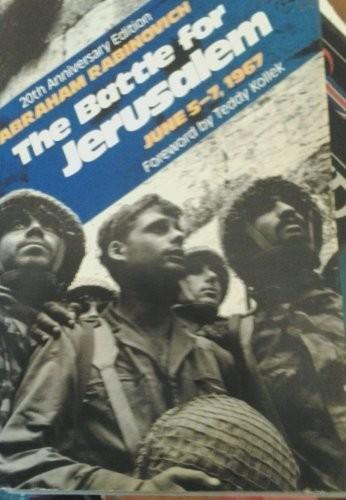
The Battle for Jerusalem, June 5-7, 1967
by
Abraham Rabinovich
Published 1 Jan 1987
Doron, 189, 203,216, 224, 228–229, 351, 358–359, 407 at link-up with Mount Scopus, 298 Motza, 149 Mount of Olives, 242, 246, 333, 352. See also Augusta Victoria Hospital. attack on, preparations for, 300, 331 shelling of, 335, 343 Mount Scopus, as way station to Temple Mount, 144, 178 as demilitarized zone, 11 convoys to, 11–13, 61 Mount Scopus (continued) Gen. Narkiss prepares for attack on, 13–15 in attack on Augusta Victoria, 357–359 Jordanian claims to capture of, 135– 136, 138 link-up with, 297–300 shelling of, 297 strategic importance of, 137–138 Mount Scopus Hotel, 295 Mount Zion, 109, 314, 400 fighting begins at, 87 in War of Independence, 136–137 tactical balance on, prewar, 30 Mualem, Cpl, 270–271 Municipal employees, mobilization of, 157–158 Musrara, 333, 343–344 blockhouse in, fighting begins at, 86–87 Nablus Gate, 378–379 Nablus Road, 180 28th battalion advances on, 264–265, 267–276 28th battalion mistakes Saladin Street for, 262–264 71st battalion breaks through to, 231– 257 Nachshon, Lt., 262–263, 269, 270, 272– 273, 317–318, 355, 387–388 Nahal Oz (kibbutz), 322 Nardi, Pvt.
…
Cairo radio quoted a Jordanian official in Amman as claiming that Jordanian troops had captured Jebel Mukaber in Jerusalem, the hill on which Government House was located. The report was repeated in an English-language broadcast from Cairo, but this time the Jordanians claimed to have captured Mount Scopus. The text of the broadcast was passed on to Narkiss, who was galvanized by its implications. He telephoned Amitai to ask whether there had been any move against either Government House Hill or Mount Scopus 4 kilometers away. Amitai checked with the Scopus commander. Major Scharfmann reported being shelled but said there was no sign yet that the Jordanians were planning to move against the enclave on the ground.
…
Stopping by Central Command headquarters at 3:05 P.M. on his way up to Jerusalem, he learned that his mission would not be defensive. “Mount Scopus is in danger,” Narkiss told him. “Your job is to link up with it. But remember the Old City. You will have to bear right toward the Rockefeller Museum and be ready to penetrate the Old City walls.” The words had slipped out, it seemed, on their own. No one at General Staff headquarters or Narkiss’s own headquarters, including himself, had yet mentioned the Old City. The battle thus far had been a measured response to military developments—subduing enemy fire, driving an invading force back from Government House, deploying to meet the perceived threat to Mount Scopus. Narkiss’s instinctive reference to the Old City in what had been intended as a briefing on the Scopus mission reflected the enclave’s role as a proxy for more mystical aspirations.
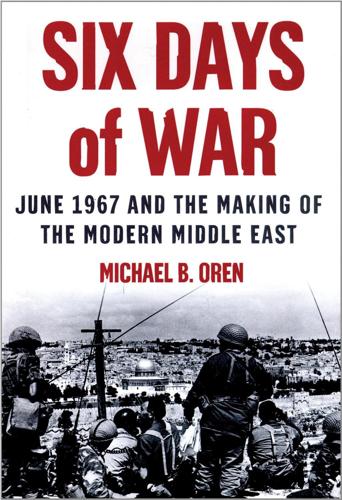
Six Days of War: June 1967 and the Making of the Modern Middle East
by
Michael B. Oren
Published 2 Jun 2003
Narkiss’s greatest fear, however, centered on the small (one-mile-square) enclave of Mount Scopus. Dominating Jerusalem’s highest hill, enclosing the buildings of the Hadassah hospital and Hebrew University that had stood dormant since 1948, Mount Scopus was defended by a UN-monitored garrison of eighty-five policemen and thirty-three civilians. Though Israel had succeeded in smuggling some heavy arms into the enclave, it remained exceedingly susceptible to attack, both from the Mount of Olives to the east and to the north, from the West Bank city of Ramallah. The fall of Mount Scopus would not only deal a tremendous blow to Israeli prestige—“No conquest in Sinai could make up for it,” Narkiss warned—but would enable the Jordanians, by linking up with their forces in south Jerusalem, to isolate the city’s 197,000 Jews.13 Little better was Israel’s situation along the West Bank border.
…
Already alarmed by these events, the Israelis were then dumbfounded when, at 2:00, Amman Radio proclaimed the fall of Mount Scopus. Remembering how the announcement of the seizure of Government House had preceded the actual attack, Narkiss concluded that Israel’s enclave was next. “It was a sign that the Jordanians had a plan,” he later testified, “a plan revealed by their over-zealousness and their sense that their problem was at last solved.” His estimate was that hundreds of Jordan’s Patton tanks would ascend the Jordan Valley to Ramallah, and attack Mount Scopus from the rear. The journey would take eight hours.25 Circumstances, for the Israelis, had turned critical.
…
Starting at 7:45 P.M., salvos of Israeli mortar and artillery shells saturated the Jordanian positions along the so-called northern line leading from the Mandelbaum Gate up to Mount Scopus. Flares and search beams lit up the night. Israeli infantrymen stationed along that line received their first relief from the Jordanian shell and small-arms fire that had continued unabated throughout the day. For Motta Gur’s paratroopers, though, the countermeasures were merely preparations for the pending effort to burst through the Arab neighborhood of Sheikh Jarrah and link up with Mount Scopus. Resisting that assault was a dense network of obstacles—bunkers, barbed wire, and mines. Rabin tried to persuade Gur to delay his attack until dawn, when cover could be provided by the IAF, but the offer was promptly declined.
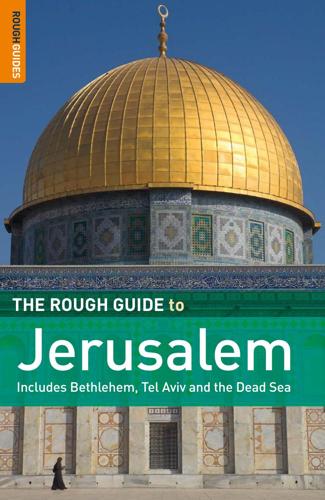
The Rough Guide to Jerusalem
by
Daniel Jacobs
Published 10 Jan 2000
Bus #26 runs to Sanhedria and the Egged Central Bus Station, and the other way to Mount Scopus. | The City of David and around Above the Tomb of Simon the Just, on Mount of Olives Road, not far from the Mount Scopus Hotel, a black stone monument commemorates the Hadassah convoy massacre, which occurred in April 1948, during Israel’s War of Independence. A ten-vehicle Haganah convoy, including two ambulances bringing medical personnel and wounded to the Hadassah Hospital, in the Jewish-held enclave on Mount Scopus, was ambushed by local Arab irregulars, after the convoy’s schedule was leaked to the Arabs by a British officer.
…
The Crusaders camped here in 1099 before taking the city, as did the British after taking it in 1917. Although physically in East Jerusalem, Mount Scopus is spiritually – and in recent history – a part of the west. The northern part 02 Jerusalem Guide 45-160.indd 121 121 18/06/09 11:36 AM remained under Israeli control after the 1948 war, an isolated enclave maintained by fortnightly convoys under UN protection; the southern part was Jordanian, but the whole mount was a demilitarized zone, with a strip of no-man’s-land between the two halves. The Hebrew University Ea s t J e rus al e m | Mount Scopus The Hebrew University on Mount Scopus gives the impression from afar that, like a SPECTRE complex in a James Bond movie, it could disappear underground at the touch of a button.
…
The Grotto of Gethsemane Just north of Mary’s tomb, and entered from the same courtyard, the Grotto of Gethsemane (Mon, Tues, Wed, Fri & Sat 8.30am–noon & 2.30–5pm, Sun & Thurs 8.30am–noon & 2.30–3.40pm) is a rival to the Church of All Nations (see pp.119–120) as the spot where the disciples rested while Jesus prayed, and where Judas kissed him. The frequently restored cave contains traces of Byzantine mosaic floors, displayed under glass panels in the new stone floor. There’s also a fresco and an ancient water cistern later used as a Byzantine burial vault. Mount Scopus East of Sheikh Jarrah, Mount Scopus offers excellent views, clean air and greenery, and houses Israel’s leading university and a botanical garden. The mount has been of vital strategic importance since Roman times. Forces under Rome’s governor of Syria, Cestius Gallus, set up camp here at the beginning of the Jewish War in 66 AD before an abortive attack on Jerusalem, as did forces under the future Roman Emperor Titus two years later when laying the siege that culminated in the final Roman victory over the city.
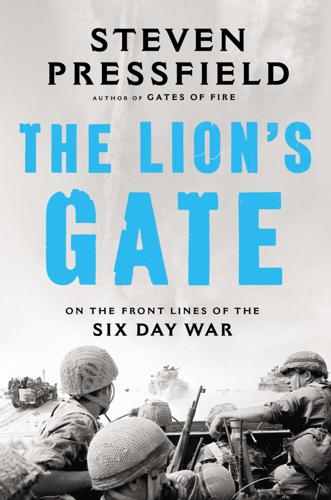
The Lion's Gate: On the Front Lines of the Six Day War
by
Steven Pressfield
Published 5 May 2014
This site is critical because it dominates the road to Bethlehem and Hebron, Jordanian cities in the West Bank from which Arab reinforcements—Hussein’s two brigades of Patton tanks, not to mention the Iraqi brigades that may have entered Jordan from the east—may advance. Jordanian troops are reported advancing as well on the Israeli enclave on Mount Scopus. I have ordered reserve forces forward to dislodge the Legionnaires from Government House and to seize all strategic road junctions by which enemy columns may approach Mount Scopus from the north. I have been compelled as well to send armored columns toward Jenin in the northern West Bank to silence Jordan’s guns firing into the cities of our coastal plain. These actions must be taken.
…
Each of the brigade’s three battalions is given a specific objective in this night’s operation. Battalion 66 will seize Ammunition Hill and the Jordanian Police School, then assault across the high ground to liberate the Israeli enclave on Mount Scopus. My battalion, 71, will advance through the Arab neighborhoods of Sheikh Jerrah and Wadi Joz, “cleaning” these of enemy defenders and positions of resistance. We will move into positions from which the battalion will be able to assault the Augusta Victoria Ridge, adjacent to Mount Scopus, when and if such orders shall be issued. Battalion 28 will break through the Jordanian defenses immediately after my battalion (our role is to clear the way for them), advancing on our right.
…
Israelis on the left—the west—Jordanians on the right.” East of the vertical stroke Zamosh draws a curved line, swelling outward like the bulge in a “D.” This line represents the collar of hills that dominate the city. Mount Scopus at the top, Augusta Victoria Ridge in the middle, the Mount of Olives at the bottom. The Jordanians hold all three. Our brigade will have to take this high ground, Zamosh says—the Mount Scopus enclave first, because that’s where 120 of our people are cut off and surrounded. At the southern end of the curved line, Zamosh sketches a rough square. This is the Old City. That’s where the Western Wall is, and a lot of other religious stuff that he hasn’t got time to tell me about.
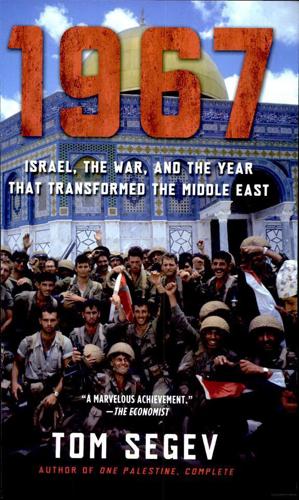
1967: Israel, the War, and the Year That Transformed the Middle East
by
Tom Segev
Published 2 Jan 2007
In the attempt to reach the place in which you stand today, many hundreds of Israeli fighters died; their bodies lay scattered over this westward-sprawling expanse and bloated in the terrible burning heat. . . . My God! The country is suddenly so large!”12 Fighting in Jerusalem continued; just before noon, Dayan reached Mount Scopus. “No conquest in Sinai would have made up for the loss in prestige had Israel failed to take Mount Scopus,” Uzi Narkis said afterward. Dayan reached Mount Scopus via the Latrun Road. He took note of the date: June 6, D-Day.13 Ezer Weizman traveled with him. On the way to Mount Scopus they stopped at a local hotel, the Ambassador. Weizman, somewhat childishly, took a few pieces of the hotel stationery “for history’s sake.” They toured the abandoned lecture halls and labs of the old Hebrew University campus.
…
Rather, things should be done quietly, “by the JNF method, acre by acre.” To the representative, access to Mount Scopus and the holy places was “a vision for the future.” Eshkol devoted a great deal of thought to the situation on Mount Scopus. He asked the army for a plan to take East Jerusalem and join up with Israeli forces on the mount, in the event that the Jordanians tried to conquer it. This was considered a strategic objective not only for the sake of national dignity, but also because it was generally held that anyone controlling Mount Scopus was easily in a position to take over the entire West Bank. A few of the generals who believed that Israel should expand its borders discussed taking over the West Bank and even debated what to do with it once it was conquered.
…
The various prohibitions in the Armon Hanatziv area were much disputed among Israel, Jordan, and the UN. Secrecy also hovered over the abandoned buildings of the Hebrew University and Hadassah Hospital on Mount Scopus. The mountain was surrounded on all sides by Jordanian territory, but according to the cease-fire agreement it remained an enclave under Israeli control. Once every two weeks, an Israeli police motorcade would drive up to Mount Scopus, as permitted by the agreement. The motorcade would leave through the Mandelbaum Gate and cross Jordanian territory, protected by UN forces. In fact, Israel was transporting troops—soldiers and officers disguised as policemen or even as scientists—to scope out the area.
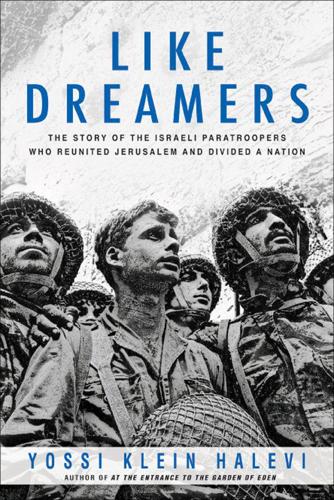
Like Dreamers: The Story of the Israeli Paratroopers Who Reunited Jerusalem and Divided a Nation
by
Yossi Klein Halevi
Published 4 Nov 2014
But Motta was uneasy. Now that King Hussein had signed a military pact with Nasser, a Jordanian attack on Jewish Jerusalem couldn’t be ruled out. At the general staff there was concern the Jordanians would attack Mount Scopus, the only outpost in East Jerusalem that Israel had managed to retain after the 1948 war. Every two weeks a convoy of Israeli soldiers was escorted by the UN through Jordanian lines to Mount Scopus. The soldiers were disguised as police, because the armistice agreement forbade an Israeli military presence there. Motta feared that the Jordanians might try to attack the convoy—the next one was scheduled for the coming week—and then overrun the outpost.
…
They stopped on the edge of a slope leading down into no-man’s-land, a tangle of barbed wire and minefields several hundred meters long. On the Jordanian side were trenches and concrete bunkers; on the Israeli side, sandbag emplacements. Crouching behind sandbags, Motta devised a plan for defending the IDF convoy to Mount Scopus. He pointed in the direction of a bend in the road sloping up toward the mount: that’s where the convoy is likely to be attacked. It was precisely the point where a convoy heading toward Hadassah Hospital on Mount Scopus had been ambushed by Arab fighters in the 1948 war; seventy-nine people, mostly doctors and nurses, had been massacred. One battalion, said Motta, would head straight for the bend, while the brigade’s other two battalions would seize the high ground overlooking the area, warding off Jordanian reinforcements.
…
Your mission, Narkiss said to Motta, is to break through the formidable barriers of minefields and trenches separating East and West Jerusalem and reach the Israeli enclave on Mount Scopus. But, he added, “Be prepared to take the Old City. I hope you will erase the shame of 1948.” Arik wasn’t interested in historical calculations. His only concern was to thwart the enemy, not to regain a stone wall where the pious once prayed. Until explicitly stated otherwise, their mission was to protect the garrison on Mount Scopus, nothing more. Arik’s new assignment was to fine-tune the rough plan that Motta had devised two days earlier during their impulsive trip to the Jerusalem front.

O Jerusalem
by
Larry Collins
and
Dominique Lapierre
Published 31 Dec 1970
Militarily, he was to strive to build a continuous line of Jewish settlement in the city by occupying Arab neighborhoods jutting in between Jewish quarters. If he could do it without getting into a clash with the British, he was to take over Sheikh Jarrah and secure communications with the Jewish institutions of Hebrew University and Hadassah Hospital on Mount Scopus. Above all, he was to maintain open communications with the Jewish Quarter of the Old City, Mount Scopus, the Dead Sea Potash Works and the satellite settlements around the city. Ben-Gurion had then reminded him that the Jewish Agency accepted internationalization of the city. He was to acknowledge the authority of the United Nations Commission if it arrived, and cooperate with it.
…
Assigned responsibility for the north, Shaltiel's intelligence officer Yitzhak Levi followed from the rooftop of his headquarters in the Histadrut Building the last British convoys heading for Haifa. As soon as they had disappeared over the ridge line beyond Mount Scopus, he ordered his men, waiting in the streets of Mea Shearim, into action. So swift was their advance that they seized almost without opposition their first objectives, the buildings of the Palestine Police Training School and Sheikh Jarrah from which the British had driven Yitzak Sadeh's Palmachniks seventeen days earlier. By midmorning, Levi had managed to reestablish communications with the besieged university and hospital on Mount Scopus. In the south, Avram Uzieli had been ordered to take the sprawling grounds of the Allenby Barracks.
…
To equip his nonexistent battalion, he sent girl soldiers to take up a door-to-door collection for blankets, cots, clothes and utensils. To feed his first recruits, he printed up a series of meal tickets for use in the neighborhood restaurants. For most of his manpower he turned to the white stone buildings of Hebrew University, set in a grove of pines on the heights of Mount Scopus dominating the northwestern approaches of the city. That university was a lodestone for some of the most capable youth in Palestine. It had also become a magnet attracting Jewish youth from all over the world. The Haganah now turned to some of those young men to bear witness to the solidarity of the world Jewish community in the coming struggle for Jerusalem.
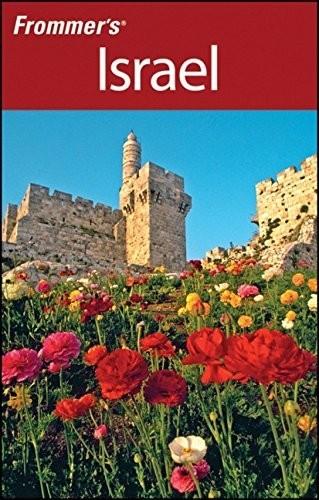
Frommer's Israel
by
Robert Ullian
Published 31 Mar 1998
Near the Damascus Gate. Admission NIS 10 ($2.50/£1.25). Daily 10am–4pm. Bus: 27. MOUNT SCOPUS, MOUNT OF OLIVES & VALLEY OF KIDRON You can reach the Mount of Olives Road either by driving north up Saladin Street or by taking a left turn at the wall, just past the Rockefeller museum. For Hebrew University Mount Scopus campus, take bus no. 4A, 9, or 28 from downtown West Jerusalem. MOUNT SCOPUS From Sheikh Jarrah (on Nablus Rd.), the road heads past the Mount Scopus Hotel and proceeds, gradually curving, past Shepherds Hotel. At the bend in Mount Scopus Road, to your left, you’ll see the Jerusalem War Cemetery, the resting place for British World War I dead.
…
.; 19 from Jaffa Gate, Agron St., King George V Ave., or Bezalel St. Located on two Jerusalem campuses, Hebrew University is one of Israel’s most dramatic accomplishments, with more than 18,000 students spread across this and the Mount Scopus campus. Built to replace the university’s original Mount Scopus campus, which was cut off from West Jerusalem from 1948 to 1967, the Givat Ram Campus now houses the university’s science departments and functions in tandem with the Mount Scopus Campus, which was reclaimed in 1967 during the Six-Day War. Take special architectural note of the Belgium House Faculty Club, La Maison de France, the physics building, and the huge Jewish National and University Library (partly inspired by LeCorbusier’s Villa Savoye in Poissy, France) at the far end of the promenade.
…
At the bend in Mount Scopus Road, to your left, you’ll see the Jerusalem War Cemetery, the resting place for British World War I dead. You are now on Mount Scopus–Har Hatsofim, which means “Mount of Observation.” It was here that the Roman armies of Titus and Vespasian camped in A.D. 70 and observed the city under siege as they planned their final attack. About 90m (295 ft.) down the ridge, you’ll find the Mount Scopus Hadassah Hospital on the left. The Hebrew University on Mount Scopus, which opened on April 1, 1925, is now one of the largest institutions of higher learning in the Middle East. It is mostly housed in a vast fortresslike megacomplex designed by David Reznik. The design seems to reflect the university’s past experience.
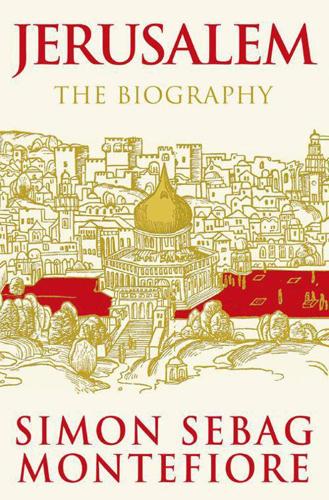
Jerusalem: The Biography
by
Simon Sebag-Montefiore
Published 27 Jan 2011
The population was usually in the high tens of thousands, but the Romans had now trapped the pilgrims and many refugees from the war, so there were hundreds of thousands of people in the city. Only as Titus encircled the walls did the rebel chieftains halt their in-fighting to unite their 21,000 warriors and face the Romans together. The city that Titus saw for the first time from Mount Scopus, named after the Greek skopeo meaning 'look at', was, in Pliny's words, 'by far the most celebrated city of the East', an opulent, thriving metropolis built around one of the greatest temples of the ancient world, itself an exquisite work of art on an immense scale. Jerusalem had already existed for thousands of years but this many-walled and towered city, astride two mountains amid the barren crags of Judaea, had never been as populous or as awesome as it was in the first century AD: indeed Jerusalem would not be so great again until the twentieth century.
…
.* Following the Koran, Omar offered Jerusalem a Covenant -dhimma - of Surrender that promised religious tolerance to the Christians in return for payment of the jizya tax of submission. Once this was agreed, Omar set out for Jerusalem, a giant in ragged, patched robes riding a mule, with just one servant. OMAR THE JUST: TEMPLE REGAINED When he saw Jerusalem from Mount Scopus, Omar ordered his muezzin to give the call to prayer. After praying, he donned the white robes of the pilgrim, mounted a white camel and rode down to meet Sophronius. The Byzantine hierarchs awaited the conqueror, their bejewelled robes contrasting with his puritanical simplicity. Omar, the hulking Commander of the Believers, a wrestler in his youth, was an implacable ascetic who always carried a whip.
…
Arab nationalists started to found secret clubs to plot for independence and even the Husseinis and other scions joined them. Meanwhile the Zionist leaders encouraged their new immigrants to create 'Jewish towns, particularly in Jerusalem, the head of the nation', and they now bought the land for the future Hebrew University on Mount Scopus. This alarmed the Families - even though the Husseinis and other landowners such as the Sursocks of Lebanon were all quietly selling land to the Zionists. Ruhi Khalidi, French-speaking intellectual and now deputy speaker of the Parliament in Istanbul, was an Ottoman liberal, not an Arab nationalist.
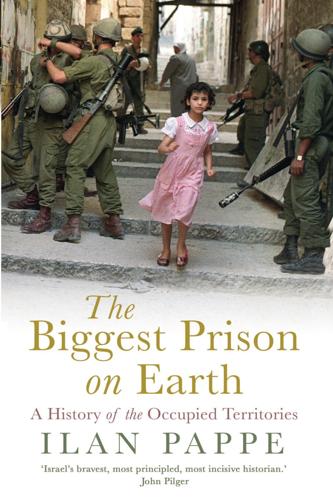
The Biggest Prison on Earth: A History of the Occupied Territories
by
Ilan Pappé
Published 21 Jun 2017
It was built on land confiscated from Sheikh al-Badr and sold to the university by the Israeli Custodian of Absentee Property2 (allegedly held pending a decision about its future, but in reality sold to any Jewish individual or enterprise prepared to pay the ridiculously low price for it). Until 1948 the university was situated on Mount Scopus, which became a ‘no man’s land’, an island within the Jordanian party of the city, and therefore inaccessible. After the June 1967 war, many of the Givat Ram campus’s departments were transferred back to the old campus on Mount Scopus, which was then expanded significantly over confiscated Palestinian land. North of the newly built campus, and at roughly the same time, a new home for the Israeli government was erected.
…
Now a mammoth labyrinth, it took me hours to find my way from my class to my office when I taught there for a short while. The Hebrew University is now part of the complex of what is called the French Hill and Mount Scopus neighbourhoods, colonies established in 1967 along with an eastern extension added later comprising Givat Hamivtar and Ramat Eshkol both discussed below. The French Hill, the western slope of Mount Scopus, was one of the first colonies built on land belonging to the people of Shua’fat. It covers 800 dunams, hosting today 12,000 settlers in 5000 units. The university stretches over 740 dunams, built as a modern-day fortress towering above North Jerusalem with its Palestinian villages.
…
But, of course, from 1963 onwards he was no longer part of the decision-making process. Back in 1958, when such hesitation was translated into military orders delivered to an Israeli army ready and willing for action, they revealed a blueprint for a very limited military operation in the West Bank. Ben-Gurion authorized only the occupation of the Arab neighbourhoods connecting Mount Scopus with West Jerusalem. The army chiefs and some of the government ministers were deeply disappointed with the plan and recommended an overall takeover. It was all in vain.25 These generals and politicians were supported by an ultra-nationalist and aggressive press. Or, to put it another way, given the very centralized nature of the media, the press was precisely in tune with the jingoistic attitude these politicians were so keen to encourage.
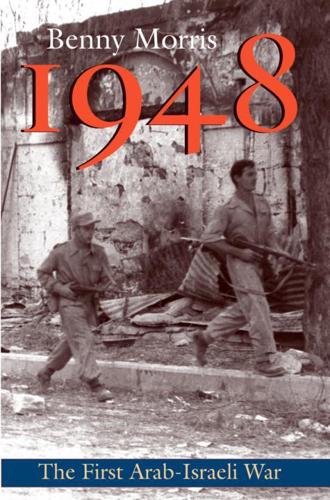
1948: A History of the First Arab-Israeli War
by
Benny Morris
Published 27 Apr 2009
On 25 April Harel units conquered the Sheikh Jarrah neighborhood and the neighboring Police School fort, north of the Old City, establishing territorial continuity between West Jerusalem and Mount Scopus. But the British, bent on maintaining control of the road from Jerusalem northward, demanded that the Haganah leave. When the Haganah refused, they let loose with cannon and mortar fire, injuring about two dozen Jewish troopers and forcing a hasty Palmah withdrawal.79 A similar Haganah effort to bolster the Mount Scopus position by taking the Augusta Victoria Hospital compound to its south failed after encountering unexpectedly strong resistance and after a Palmah mortar exploded.80 But the southern arm of Yevussi (z), designed to establish territorial continuity between the center of Jewish Jerusalem and the isolated southern Jewish neighborhoods of Mekor Hayim and Talpiyot, fared better.
…
A linkup had been achieved. 162 But the route from Shu`fat through Sheikh Jarrah and Musrara to the Old City was still enfiladed by Haganah (and IZL) light weapons and mortars from West Jerusalem's easternmost districts and, from the east, from the Hebrew University-Hadassah Hospital campus on Mount Scopus, a Haganah enclave in Arab territory. A Legion effort to break into Mount Scopus that day was repulsed by the Haganah, as were small armored thrusts westward, into the Sanhedria, Beit Yisrael, and Mandelbaum Gate areas. The main thrust, at Mandelbaum Gate, was beaten off, with three Legion armored cars disabled, by a melange of Home Guard and Gadna (Haganah youth corps) fighters, brandishing a PIAT and Molotov cocktails, supported by one Haganah armored car mounting a two-pounder. 163 Operation Kilshon and the Jordanian attack of Jerusalem, 13-z8 May 1948 The success boosted Yishuv morale; the Haganah had demonstrated, after the defeats in the `Etzion Bloc and the Police School, that the Legion's armor and artillery could be stopped. 161 On zo May Legion armored cars attacked the Haganah and Gadna positions on the top floors of Notre Dame, which dominated the northern wall of the Old City.
…
HIS officers around the country immediately reported on the fear- and flight-sowing impact of Deir Yassin.65 Ben-Gurion himself noted-probably not unhappily-that Deir Yassin had propelled flight from Haifa.66 British intelligence commented that "the violence used [at Deir Yassin] so impressed Arabs all over the country that an attack by [the] Haganah on [the Arab village of] Saris met with no opposition whatsoever."67 Mapam's leaders later assessed that Deir Yassin had been one of the two pivotal events (the other was the fall of Arab Haifa) in the exodus of Palestine's Arabs.61 The HIS-AD, in summarizing the Arab flight to the end of June 194.8, pointed to Deir Yassin as a "decisive accelerating factor."69 But Deir Yassin was also, in an immediate, brutal sense, to harm the Jews. On the morning of 13 April, hundreds of militiamen from Jerusalem and surrounding villages, taking revenge for Deir Yassin and the death of Abd alQadir, descended on the road running through the East Jerusalem neighborhood of Sheikh Jarrah, which linked Jewish Jerusalem and Mount Scopus, and ambushed a ten-vehicle Haganah convoy carrying mostly unarmed Jewish lecturers, students, nurses and doctors on their way to the mountaintop Hadassah Hospital-Hebrew University campus. Ironically, the convoy was also carrying two IZL fighters wounded at Deir Yassin. During the previous months, the Arabs had left these convoys-which were often accompanied by British armored cars-alone.

Letters to My Palestinian Neighbor
by
Yossi Klein Halevi
Published 14 May 2018
But Jordanian army units based in East Jerusalem began shelling Jewish neighborhoods in West Jerusalem. A brigade of Israeli paratroopers was dispatched to the city and, with only hours to organize, crossed the municipal no-man’s-land of minefields and barbed wire and attacked Jordanian positions. The goal was to stop the firing on West Jerusalem and to protect the Israeli enclave of Mount Scopus in East Jerusalem. There were no contingency plans for the IDF to take the Old City. Even as Israeli paratroopers surrounded the Old City’s walls, the Israeli government hesitated to give the order to invade—though the area contains the holiest Jewish sites, to which we’d been denied access ever since the Jordanians seized them in 1948.
…
When Israeli paratroopers reached the Temple Mount on the morning of June 7, 1967, their first impulse was to reclaim the site for the Jewish people. And so two paratroopers climbed up the Dome of the Rock and hoisted an Israeli flag. Defense Minister Moshe Dayan, who was watching through binoculars from nearby Mount Scopus, radioed the paratroopers’ commander and ordered the flag immediately removed. It is, in retrospect, an astonishing example of restraint. The Jewish people had just returned to its holiest site, to which we had been denied access for centuries, only to effectively yield sovereignty at this moment of triumph.
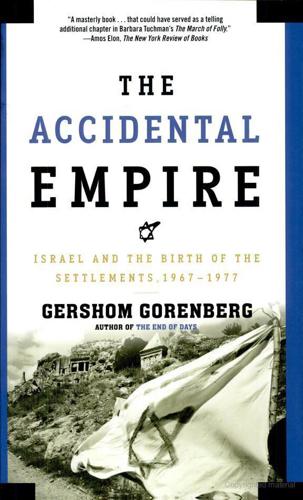
The Accidental Empire: Israel and the Birth of the Settlements, 1967-1977
by
Gershom Gorenberg
Published 1 Jan 2006
The battle for the West Bank had begun. Initially, the Israeli counterattack was defensive. One goal was to seize a slice of the northern West Bank, around the town of Jenin, to end the fire at the northern air base. In Jerusalem, the army sought to take U.N. headquarters, and also to link up with Mount Scopus, a threatened Israeli enclave in northeast Jerusalem that had been surrounded by Jordanian land since 1948. The latter task was assigned in part to Colonel Mordechai Gur’s paratroop brigade, quickly bused to the city from the southern front. Among the soldiers were Hanan Porat and his yeshivah friends.
…
By the war’s first afternoon, Menachem Begin and Yigal Allon—rightist and leftist made partners by territorial desire—arrived at Eshkol’s office and pressed the prime minister to take Jerusalem’s Old City.87 A cabinet meeting that night postponed a decision; Eshkol was nervous about diplomatic fallout and the walled city’s symbolism to other faiths. The next morning, arriving on Mount Scopus via ground conquered by the paratroopers in bitter fighting, Defense Minister Dayan refused to give Uzi Narkiss permission to enter the Old City. Surround it, Dayan said, but keep out of “all that Vatican.”88 But by the predawn hours of June 7, with a U.N. cease-fire call expected, Eshkol gave the go-ahead to exploit opportunity, and Dayan ordered Colonel Gur’s paratroopers to conquer Old Jerusalem.
…
That included Neveh Ya’akov and Atarot, Jewish farming communities to the city’s north, whose residents had fled during the 1948 fighting. As one Israeli researcher notes, there was an “almost mystical attraction to redeeming Jewish-owned land.”8 Victory brought with it not only the right but even the obligation of return. Ze’evi was also told to include Mount Scopus, strategic ridges, sites with Jewish historical significance, and land for future urban development—and as far as possible to avoid adding Arab suburbs and villages.9 Decisions about the contested city would be first political and military, and only afterward—if at all—a matter of urban planning.
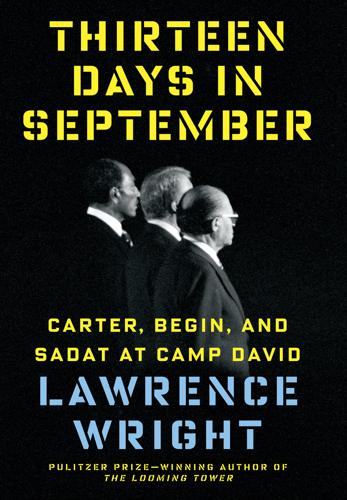
Thirteen Days in September: Carter, Begin, and Sadat at Camp David
by
Lawrence Wright
Published 15 Sep 2014
They waved to him in greeting. Weizman set the helicopter down in the parking lot of the Jerusalem convention center. The war was all around them and the smell of cordite seared the nostrils. Dayan ordered General Narkiss to provide a jeep to take them up to Mount Scopus, which looms over the Old City. Although nominally a part of Israeli territory, Mount Scopus had been a demilitarized enclave inside Jordanian Jerusalem since 1948. That war had left the city divided between the new Jewish neighborhoods and the major portion, including the Old City, which Jordan had seized and annexed. Now after nineteen years the prospect of reunifying the holy city was within grasp.
…
Levant Lewis, Samuel, prl.1, 1.1, 8.1, 12.1, nts.1 Libnah Libya, 4.1, 8.1 Likud, prl.1, 11.1 Lincoln, Abraham Little Round Top Living with the Bible (Dayan), Lloyd, Selwyn Lohamei Herut Yisrael, see Stern Gang Lukishki Prison, 6.1, 6.2 Lydda Macmillan, Harold Maddox, Lester, prl.1, 3.1 Maher, Ahmed, 10.1 Makkedah Malaysia Marines, U.S., 3.1, 3.2 Maronite Christians Marwan, Ashraf, 10.1, nts.1 Mayflower generation Mecca, prl.1, 10.1 Meir, Golda, prl.1, prl.2, 10.1, 10.2, 10.3 Sadat’s trip to Jerusalem and U.S. arms requested by Yom Kippur War mobilization ordered by Meridor, Dan Merneptah, Pharaoh, 4.1, 4.2 Mit Abul Kum, Egypt, prl.1, prl.2 Mitla Pass Moabites Mohammad Reza Shah Pahlavi, 8.1, epl.1 Mollet, Guy, 4.1, 4.2 Mondale, Walter, prl.1, prl.2, 6.1, 10.1, 11.1, 11.2, 12.1, 12.2 Morocco Morris, Benny Moses, prl.1, 3.1, 3.2, 3.3, 4.1, 4.2, 5.1, 12.1, epl.1 Mossad Mount Herzl Mount of Olives, 5.1, 8.1 Mount Scopus Mount Sinai, 3.1, 3.2 Mount Zion Mubarak, Hosni, 1.1, 9.1, epl.1 Muhammad, prl.1, 1.1, 10.1 Muslim Brotherhood, 8.1, epl.1 Mutwatallis, King of Hittites Nahalal Nahal Oz, 4.1, 4.2 Nahhas, Mustafa al- Narkiss, Uzi, 5.1, 5.2 Nasser, Gamel Abdel, prl.1, 1.1, 1.2, 2.1, 3.1, 4.1, 4.2, 8.1, epl.1 Israel’s offer to return Sinai to revolution of in Six-Day War, 5.1, 9.1 Soviet weapons requested by in Suez Crisis, 4.1, 4.2, 4.3, 4.4, 4.5 troop buildup by, prl.1, 5.1, 5.2 in War of Attrition National Guard, Georgia National Security Council, 5.1, 10.1, 10.2, 11.1 Navon, Yitzhak Navy Wife, A Nazis, Nazism, 2.1, 2.2, 2.3, 6.1, 6.2, 9.1 NBC Nebuchadnezzar Negeb Newsweek New York State New York Times, prl.1, epl.1 Nicosia, Cyprus 1973 War, prl.1, prl.2, prl.3, 1.1, 1.2, 3.1, 3.2, 10.1, 11.1, 11.2, epl.1 buildup to, 10.1, 10.2, 10.3 Holocaust made prominent in Israel by Israel’s lack of response to, 10.1, 10.2, 10.3, 10.4 start of timing of invasion in niqab Nixon, Richard, prl.1, 3.1, 9.1, 10.1 Middle East peace and pardon of Soviet Union visited by, 9.1, 10.1 Normandy invasion North Korea oil embargo Old Testament, prl.1, 4.1, 5.1, 8.1 one-text procedure Opera Square Operation Badr Operation Musketeer Orange One “Origins of Palestinians and Their Genetic Relatedness with Other Mediterranean Populations,” n Ottomans, Ottoman Empire, prl.1, 3.1, 4.1, 8.1, 8.2 Palestine: British troops in divided into two states Jews in, prl.1, 2.1, 4.1 Palestine Aviation Club Palestinian Liberation Organization Begin’s rooting out of U.S. pledge not to talk to Palestinians, prl.1, prl.2, prl.3, prl.4, 1.1, 10.1 Begin’s avoidance of term, 1.1, 12.1 Camp David’s vague promise for Dayan’s desire for autonomy of discussed at Camp David, 5.1, 6.1, 9.1, 12.1, 12.2; see also West Bank in Egypt’s position, 2.1, 3.1, 3.2 independence discussed for Irgun’s terrorism against in Israel before independence Israeli refusal of “full autonomy” for, 6.1, epl.1, epl.2 March 11 terrorist attack of as mascot for Islamists massacred at Sabra and Shatila in peace treaty Philistines as ancestors of, 4.1, 6.1 refugees of, 2.1, 2.2, 2.3, 3.1, 3.2, 3.3, 3.4, 4.1, 4.2, 4.3, 4.4, 5.1, 5.2, 7.1, 9.1, 11.1, 12.1, epl.1 Sadat’s ambivalence on see also Gaza Strip; West Bank Panama Canal Partition Plan Passover, 3.1, 3.2 Patton Patton, Bruce, n Peach Orchard People’s Assembly, Egyptian, prl.1, 11.1 Peres, Shimon, 9.1, 11.1 Perlman, Itzhak Persia, 2.1, 4.1 Phalange party Pharaoh, 3.1, 3.2, 3.3 Philistines Pickett’s Charge Plains, Ga., 3.1, 3.2, 3.3 Plains Baptist Church Podgorny, Nikolai Poland, 2.1, 9.1 Pomfret, USS, Port Fuad Port Said, prl.1, 4.1 Portugal Powell, Jody premillennialism Price, Leontyne Psalms, Book of, 8.1, 11.1 Qastel Quandt, William, 1.1n, 1.2, 5.1, 10.1, 11.1, nts.1 Quran, prl.1, 3.1, 3.2, 3.3, 8.1, 10.1, epl.1 Qutb, Sayyid Rabhan, David, prl.1, nts.1 Rabin, Yitzhak, 4.1, 9.1 Carter’s dislike of Ford’s letter to, 1.1, nts.1 in Six-Day War Radio Cairo Rafshoon, Gerald, 3.1, 13.1, 13.2 Ramadan Ramses II, Pharaoh Rashid Raven Rock Reader’s Digest Reagan, Ronald Red Cross Reed, Cecil Revisionism Revolt, The (Begin), prl.1, 2.1 Revolutionary Command Council Ribicoff, Abraham Rickover, Hyman Rimsky-Korsakov, Nikolai River Jordan, prl.1, 4.1 Romania Rome, prl.1, 8.1 Rommel, Erwin Roosevelt, Franklin D., prl.1, 1.1, 1.2 Roosevelt, Theodore Rosenne, Meir Rostropovich, Elena Rostropovich, Mstislav, 13.1, 13.2 Rotenberg, Roy Royal Military Academy Rubin, Gail Rubinstein, Elyakim Russia Sabra Sadat, Anwar: advisers to arrest and imprisonment of, 2.1, 2.2, 6.1 birth of British hated by Carter’s criticism of Carter’s fondness for, prl.1, 1.1, 8.1, 11.1, epl.1 Carter’s post-Camp David visit to Carter’s power overestimated by cease-fire with Egypt proposed by at celebration of 1973 War CIA’s profile of, prl.1, prl.2, prl.3 in collaboration with Nazis as conduit between Muslim Brothers and Nasser death of daughter of drinking by farming background of funeral of Gandhi imitated by at Gettysburg, 6.1, 6.2, 6.3, 10.1, 13.1, epl.1 health problems of Hitler admired by on Israel’s War of Independence Jerusalem trip of, prl.1, prl.2, prl.3, prl.4, 5.1, 11.1 Kamel appointed foreign minister by Kissinger’s admiration for Kissinger’s ceasefire accepted by Knesset speech of, prl.1, prl.2 lack of popularity of March 11 terrorist attack and murder of negotiating technique of nervous troubles of 1973 War cease-fire called for by 1973 War started by, prl.1, prl.2, prl.3, prl.4, 3.1, 10.1, 10.2 1973 War worries of nominated for Nobel Prize peace proposal of peace treaty signed by plans for assassination of prison stretch of radical Islamic fury with radical reforms of religious beliefs of, prl.1, 6.1 Royal Military Academy attended by, prl.1, prl.2 in shift away from socialism Sinai surrendered to in Six-Day War Six-Day War set in motion by Soviet military experts dismissed by Soviet weapons requested by, 9.1, 9.2 terrorist threat against Sadat, Anwar, at Camp David, 1.1, 1.2, 2.1, 7.1, 8.1 as ambivalent about Palestinians arrival of atmosphere as viewed by Begin’s sincerity doubted by, 3.1, 7.1, 11.1 Begin’s worry about Carter’s conspiring with Carter invited to Egypt by Carter’s worries about safety of changing view of Carter by departure considered by, 3.1, 4.1, 7.1, 11.1 depression of division in delegation of draft of Egyptian position by, 2.1, 2.2, 3.1, 3.2, 4.1, 6.1, 6.2 final settlement agreed to by first U.S. plan and, 4.1, 4.2 helicopter ordered by as hoping to become U.S. ally idealism of Israel’s demilitarization negotiated by Israel’s withdrawal from Egypt demanded by, 1.1, 1.2, 1.3 Kamel’s anger at, 11.1, 11.2, 12.1, 13.1, 13.2 offer of, to sign treaty without reading plan of, 1.1, 1.2 rebellious attitude of second U.S. position accepted by, 7.1, 7.2, 7.3, 8.1 at signing of Accords, 13.1, 13.2 silence and secrecy of, 3.1, 5.1 Sinai settlements and in talks with Dayan, 10.1, 10.2 U.S Framework accepted by U.S.
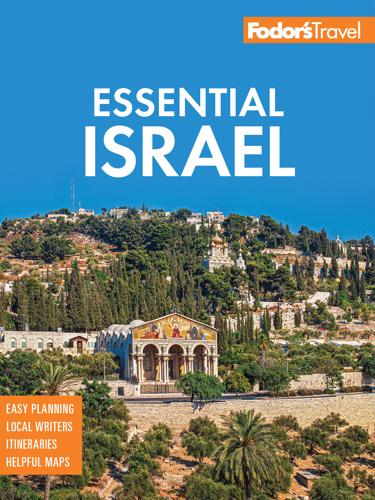
Fodor's Essential Israel
by
Fodor's Travel Guides
Published 2 Aug 2023
JERUSALEM The privately run Terem Emergency Care Center in Jerusalem provides first aid and full medical attention, 24 hours a day, at its Romema and Bikur Holim clinics, and more limited hours at its third Jerusalem location. The major hospitals in Jerusalem are Hadassah Ein Kerem, Shaare Zedek near Mount Herzl, and Hadassah Mount Scopus. TEL AVIV Tel Aviv Sourasky Medical Center (also known as Ichilov Hospital) is in north Tel Aviv, about a 10-minute drive (depending on traffic) from downtown. There’s a 24-hour emergency room. Be sure to bring your passport with you. You are provided with all records in English for your insurance providers at home.
…
If you’re driving, however, you can sometimes find free parking at the Seven Arches Hotel on the Mount of Olives and paid parking at the cluster of large hotels near the American Colony; or take a cab. GETTING HERE AND AROUND If you enjoy a bit of a walk and the weather is fine, it’s no more than a 25-minute walk from Hebrew University’s Mount Scopus campus (served by West Jerusalem bus routes 19, 34, and 68) across to the Mount of Olives. The panoramic view of the Judean Desert to the east is a bonus. A cab ride is an alternative, but if you skip the top of the mountain, the rest of the sights are accessible by foot from the Old City. TIMING AND PRECAUTIONS Morning views are best from the Mount of Olives.
…
Pros: atmospheric cellar bar in winter, lovely garden bar in summer; good English bookstore and gift shop; beautiful pool. Cons: quiet neighborhood at night; a cab or light-rail ride from most attractions; hotel staff could be friendlier. D Rooms from: $320 E 1 Louis Vincent St., East Jerusalem P 02/627–9777 wwww.americancolony.com a 92 rooms X Free Breakfast. Dan Jerusalem Hotel $$ | HOTEL | Cascading down Mount Scopus, the sprawling Dan Jerusalem has spectacular views, an oasis-like pool, and a bold design. Pros: impressive architecture; spacious lounge/lobby; impressive spa and Turkish bath. Cons: remote location; a bit overpriced; outdated decor. D Rooms from: $200 E 32 Lehi St., East Jerusalem P 02/533–1234 wwww.danhotels.com a 505 rooms X Free Breakfast.

Enemies and Neighbours: Arabs and Jews in Palestine and Israel, 1917-2017
by
Ian Black
Published 2 Nov 2017
Other well-known members included Martin Buber, the charismatic philosopher, the historian Gershom Scholem, and a number of Jewish professors of oriental studies at the newly founded Hebrew University of Jerusalem. Arab hostility was unmistakable when Lord Balfour, accompanied by Weizmann and Field Marshal Allenby, attended the inauguration of the new institution on Mount Scopus, on 1 April that year, and a general strike was declared. Hundreds of telegrams of protest arrived at Government House but he drew no conclusions from driving through nearly empty streets.65 By contrast, he was warmly welcomed by Jews in Jerusalem and Tel Aviv, and especially in Balfouriya, a settlement founded near Afula by American Zionists in honour of this ‘new Cyrus’ (the Persian king who had liberated the Jews from their Babylonian exile).
…
Shortly afterwards, news came through of another massacre, this time of twenty-two villagers in Khirbet Nasser ed-Din, south-west of Tiberias on the shore of the Sea of Galilee.66 That was described as ‘a second Deir Yassin’.67 Revenge was not long in coming: on 13 April Arab fighters ambushed a convoy of trucks, ambulances, buses and armoured cars heading to the Jewish enclave on Jerusalem’s Mount Scopus, home of the Hebrew University. Seventy-eight lecturers, students, nurses and doctors as well as their Haganah escorts, were killed as British forces looked on without intervening. The attack caused disquiet among Arab doctors.68 The fighting intensified a gathering Palestinian exodus from Jerusalem, with the evacuation of the southern suburbs of Baqaa, Qatamon and the German Colony, the roads clogged with lorries loaded with household goods.69 Petrol shortages meant that the cost of travel to Amman and Damascus soared so that it was manageable only for the better-off and for government employees who had received redundancy payments.
…
Along with the rest of the eastern side of town, under Jordanian control, it was cut off from the western side by no-man’s-land that was bordered by barbed wire, minefields and concrete anti-sniper walls, breached by one official crossing point – the Mandelbaum Gate – on the ‘seam’ between the two sides. Once a fortnight a convoy of Israeli armoured buses was allowed through to resupply the Israel-held enclave on Mount Scopus. Foreign diplomats, clergymen and pilgrims were able to cross but ordinary Arabs and Israelis could not. Many of the shops, clubs, cafes, schools and restaurants that had been an essential part of Arab lives in Jerusalem were out of reach. Jaffa and Haifa were now in another country – an enemy country.
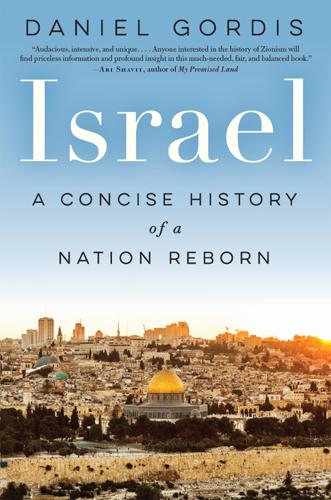
Israel: A Concise History of a Nation Reborn
by
Daniel Gordis
Published 17 Oct 2016
The Eleventh Zionist Congress, held in Vienna in 1913, determined that a university should be established in Jerusalem and that its construction should begin within five years.15 On July 24, 1918, less than a year after Balfour, thousands of people gathered for the ceremonial cornerstone laying for Hebrew University on Mount Scopus. The centrality of intellectual life to the Yishuv and to the state it would ultimately create was clear from the outset. With the end of World War I in 1918, it was once again possible for people to move across the globe. That freedom of movement, combined with a new round of anti-Semitism in Europe and armed clashes in Russia in which some 100,000 to 200,000 Jews were killed, led to the next wave of immigration to Palestine.
…
We have in our hands a gift of history. Future generations will never forgive us if we do not seize it.”31 Within a few hours, the IDF command issued the order that two battalions “break through the barrier separating East and West Jerusalem, navigating through the minefields and trenches and reach Mount Scopus.” The soldiers were told to prepare to take the Old City and to “erase the shame of 1948.”32 The next day, June 6, paratroopers entered Jerusalem by bus. Though they could hear shelling on the far side of the city, West Jerusalem—which had been in Israeli hands since 1948 and was now Israel’s capital—was silent.
…
While this is a widely held view, not everyone agrees that acetone had anything to do with the Balfour Declaration, and some scholars consider the linkage mere urban legend. 12Arthur James Balfour, “Balfour Declaration” (1917), The Avalon Project, http://avalon.law.yale.edu/20th_century/balfour.asp [Last viewed December 7, 2015]. 13Shapira, trans. Berris, Israel: A History, p. 73. 14Eitan Bar Yosef, “The Last Crusade? British Propaganda and the Palestine Campaign, 1917–18,” Journal of Contemporary History, Vol. 36, No. 1 (January 2001), p. 100. 15The Mount Scopus site was acquired in 1914—but World War I ensured that building was delayed until 1918. 16Seth M. Siegel, Let There Be Water: Israel’s Solution for a Water-Starved World (New York: Thomas Dunne Books, 2015), p. 22. 17Martin Gilbert, Israel: A History (New York: Harper Perennial, 1998), p. 9. 18Ibid., pp. 45–46. 19Siegel, Let There Be Water, p. 28. 20Shlomo Avineri, lecture at the Shazar Center in Jerusalem on December 30, 2014. 21Anita Shapira, trans.
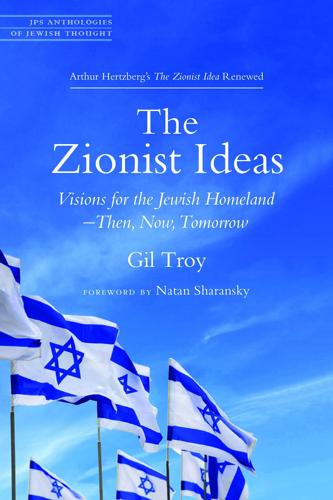
The Zionist Ideas: Visions for the Jewish Homeland—Then, Now, Tomorrow
by
Gil Troy
Published 14 Apr 2018
Opening a university reflected Zionism’s rationalist, scientific side, its understanding that a true cultural revolution included what the national poet Hayyim Nahman Bialik called “all elements of life, from the lowest to the most sublime,” and a certain confidence. If you can stop draining swamps temporarily to launch lasting cultural institutions, you’re on your way to building a sophisticated nation-state. Bialik, the poet who rejected exile, now offered prose of liberation. Standing on Mount Scopus with its view of Jerusalem’s historic walls, he welcomed this new university into a long line of “nationalist schools in all its forms” that had started with the lowly heder, a one room Torah school for young Eastern European boys. He celebrated the union of the rough, secular pioneers with their ethereal religious cousins—the “Earthly Jerusalem” the youth were building alongside the traditional “Heavenly Jerusalem” of their parents’ and grandparents’ dreams.
…
After fearing the chaos of the Russian Revolution and suffering the loneliness of the exiled writer in Istanbul, Paris, and Berlin, Hazaz arrived in Palestine in 1930. Displaying dazzling range, Hazaz rendered the exotic world of Yemenite Jews living in Jerusalem as vividly as the more familiar universe of Eastern European Jewry. His only son, Nahum Zuzik Hazaz, a twenty-year-old artist and writer, died in an attack on Mount Scopus during the 1948 war. Zuzik’s mother, the poetess Yocheved Bat-Miriam, never wrote another poem again. Hazaz’s most famous work, HaDerisha, flirts with the nihilism of Jewish history and of Zionism amid the profound hatred Jews endured. The protagonist, Yudka, translated as “Little Judah” or “Jew,” sees Zionism and Israel as such a break with the passivity of galut suffering, he fears a mass vertigo will result.
…
They are plowing rocks, draining swamps, and building roads amid singing and rejoicing. These young people know how to raise simple and crude labor—physical labor—to the level of highest sanctity, to the level of religion. It is our task to kindle such a holy fire within the walls of the house which has just been opened upon Mount Scopus. Let those youths build the Earthly Jerusalem with fire and let them who work within these walls build the Heavenly Jerusalem with fire, and between them let them build and establish our House of Life. “For Thou, O Lord, didst consume it with fire, and with fire Thou wilt rebuild it.” Micah Joseph Berdichevski (1865–1921) We must cease to be Jews by virtue of an abstract Judaism and become Jews in our own right, as a living and developing nationality.
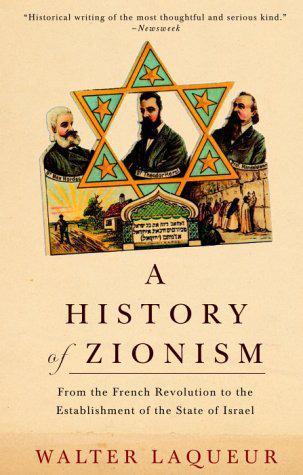
A History of Zionism
by
Walter Laqueur
Published 1 Jan 1972
Weizmann reported on the preparations for the establishment of a Jewish university in Jerusalem, following a resolution that had been passed in Herzl’s days by the fifth congress. For some Zionists this was an issue of paramount importance. Ahad Ha’am had declared at the first conference of Russian Zionists that one university was as important as a hundred settlements. A plot on Mount Scopus was acquired in 1913, a national library had been started in Jerusalem, and it was now proposed to establish a special commission to pursue the project. This aroused much enthusiasm: Bialik spoke of the great vista of the cultural revival. It was a relatively calm, unhurried congress after the storms of the previous years.
…
.* Subsequently he got on reasonably well with Allenby, though the commander-in-chief probably never changed his basic view that there was no future for the Jews in Palestine. During his stay Weizmann met Emir Faisal; details of this inconclusive meeting are given elsewhere in the present study. And, in July 1918, while the war was still in progress, he laid the cornerstone of the Hebrew university on Mount Scopus which was to be opened six years later. Since there was little else that could be done for the time being, Weizmann decided to return to London to pursue the political work in the European capitals, which had by no means been completed. The Zionist commission took over the Palestine Office in Jaffa which had been established before the war by the World Zionist Organisation.
…
He later described his feelings as he made his way to the speaker’s table between the rows of spectators in the dining-room of the Palace Hotel in Jerusalem: I felt that I not only carried the burden of these well-wishers, and of countless others in other lands, but that I would be speaking for generations long since dead, for those who lay buried in the ancient and thickly populated cemeteries on Mount Scopus, and those whose last resting places were scattered all over the world. And I knew that any mis-step of mine, any error however involuntary, would be not mine alone, but would rebound to the discredit of my people. I was aware, as on few occasions before or since, of a crushing sense of responsibility.* Weizmann surveyed Jewish history in modern times, and the development of Zionism as an answer to Jewish homelessness.
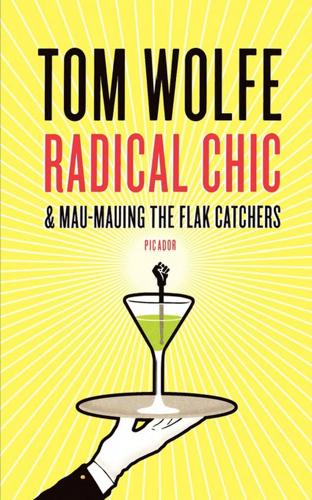
Radical Chic & Mau-Mauing the Flak Catchers
by
Tom Wolfe
Published 1 Jan 1970
Leonard Bernstein went off to England to rehearse with the London Symphony Orchestra for an already scheduled performance in the Royal Albert Hall. He couldn‟t have been very sorry about the trip. Unbelievable hostility was still bubbling around him. In Miami, Jewish pickets forced a moviehouse to withdraw a film of Lenny conducting the Israel Philharmonic on Mount Scopus in celebration of Israel‟s victory in the Six-Day War. In general, the Radically Chic made a strategic withdrawal, denouncing the “witchhunt” of the press as they went. There was brief talk of a whole series of parties for the Panthers in and around New York, by way of showing the world that socialites and culturati were ready to stand up and be counted in defense of what the Panthers, and, for that matter, the Bernsteins, stood for.
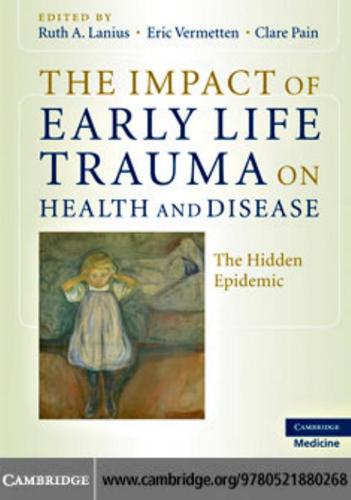
The Impact of Early Life Trauma on Health and Disease
by
Lanius, Ruth A.; Vermetten, Eric; Pain, Clare
Published 11 Jan 2011
Fisher, PhD Department of Psychology, University of Oregon Senior Research Scientist, Oregon Social Learning Center Eugene, OR, USA Peter Fonagy, PhD The Anna Freud Centre London, UK Julian D. Ford, PhD Department of Psychiatry University of Connecticut School of Medicine, Farmington, CT, USA Amit Goldenberg Hebrew University Mount Scopus, Jerusalem, Israel Megan R. Gunnar, PhD Institute of Child Development University of Minnesota Minneapolis, MN, USA Udi Harari Hebrew University Mount Scopus, Jerusalem, Israel Felicia Heidenreich Transcultural Research and Intervention Team (TRIT) CSSS de la Montagne Montréal, QC, Canada Christine Heim PhD Department of Psychiatry & Behavioral Sciences Emory University School of Medicine Atlanta, GA, USA List of contributors Judith Herman MD Victims of Violence Program Department of Psychiatry Cambridge Health Alliance Cambridge, MA, USA Monica Hodges, PhD Department of Psychology California State University Long Beach CA, USA Shlomit Jacobson-Pick, PhD Institute of Neuroscience Carleton University, Ottawa, Canada.
…
Seraphin, PhD Developmental Biopsychiatry Research Program McLean Hospital Belmont, MA, USA Vansh Sharma, MD Mount Sinai School of Medicine Department of Psychiatry New York, NY, USA Yi-Shin Sheu, BS Psychological and Brain Sciences Program The Johns Hopkins University Baltimore, MD,USA Kelly Skelton, MD, PhD Atlanta VA Medical Center Decatur, GA, USA Steven Southwick, MD Yale University School of Medicine Department of Psychiatry New Haven, CT, USA List of contributors David Spiegel, MD Department of Psychiatry & Behavioral Sciences Stanford University School of Medicine Stanford, CA, USA Deborah M. Stone, ScD, MSW, MPH Harvard School of Public Health Department of Society, Human Development, and Health Boston, MA, USA Nathan Szajnberg, MD Hebrew University Mount Scopus, Jerusalem, Israel Martin H. Teicher, MD, PhD Department of Psychiatry Harvard Medical School Developmental Biopsychiatry Research Program McLean Hospital Belmont, MA, USA Akemi Tomoda, MD, PhD Department of Child Development Faculty of Life Sciences Kumamoto University, Japan Ed Tronick, PhD Child Development Unit Children’s Hospital Boston Boston, MA, USA Onno van der Hart, PhD Department of Clinical and Health Psychology Utrecht University, Utrecht Netherlands Bessel, van der Kolk A.
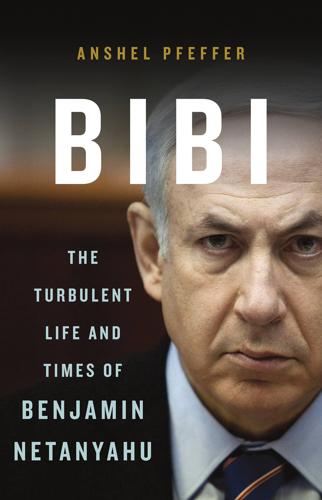
Bibi: The Turbulent Life and Times of Benjamin Netanyahu
by
Anshel Pfeffer
Published 30 Apr 2018
The closed door behind which their father read and wrote, and the general quiet required from the boys while in the house, would be the abiding memory of their childhood home. The one advantage that Jerusalem had in those days over Tel Aviv, and the reason for the family’s move there, was that it was still the only university town in Israel. But Hebrew University was in disarray, having been forced to move from its Mount Scopus campus, which had become a tiny Israeli-held enclave in Jordanian-occupied territory. The faculty had been forced to relocate to cramped quarters in a building rented from the Catholic Church in central Jerusalem. The Israeli writer Amos Oz, whose father, a researcher of Hebrew literature, failed to find a post at the university more senior than junior librarian, recalled in his memoir, A Tale of Love and Darkness, that Jerusalem was then “filled with the refugees of Poland and Russia and refugees of Hitler, among them leading lights of famed universities.
…
The first member of the family to arrive in Israel was fifteen-year-old Iddo, who had returned to high school in Jerusalem alone. It was left to the two older brothers to find Iddo a school and lodgings, organize Yoni’s wedding and the young couple’s departure for the United States, and prepare for Bibi’s upcoming military service. The small ceremony on August 17 took place at the Mount Scopus amphitheater at the Hebrew University campus. For nineteen years it had remained empty, lying in a tiny Israeli enclave within Jordanian-occupied territory. Bibi’s role for most of the ceremony was keeping away tourists at the site, which overlooked the newly conquered Judean Desert. Although Benzion and Tzila had not been able to come visit Yoni in the hospital, they did come to the wedding.

1947: Where Now Begins
by
Elisabeth Åsbrink
Published 31 Jul 2016
A few years later, Ahmed Zaki, a former Egyptian cabinet minister, congratulated the growing Zionist movement with the words: “The victory of the Zionist idea is the turning point for the fulfillment of an ideal which is so dear to me, the revival of the Orient.” In Jerusalem, on April 1, 1925, the Egyptian Minister of the Interior, Ismail Sidqi, had no qualms about inaugurating the first Hebrew university on Mount Scopus. As criticism of immigration into Palestine became increasingly widespread, the Egyptian press responded by writing about Zionists and Zionism, but avoided the word “Jews” so as to protect the country’s indigenous Jewish population from hate. Local Nazis in Cairo wrote to Berlin in 1933 to complain that it was pointless wasting time and money on anti-Jewish pamphlets, as no one was interested.

Pumpkinflowers: A Soldier's Story of a Forgotten War
by
Matti Friedman
Published 2 May 2016
For the Palestinians there would be no more humiliation or compromise, just as Hezbollah had brooked none. Watching Palestinian television, I saw yellow Hezbollah flags appear at rallies. Propaganda videos showed riots in Gaza with clips of Israeli vehicles leaving the security zone. The humanities faculty of Hebrew University is in a concrete fort of a campus set atop Mount Scopus. In the university’s walls in those days I studied Islam as an idea that touched a nerve in Arabia long ago and showered countries with spires and domes, poetry and prophecy in flowing letters, empires coming together like drops of mercury and splitting apart like amoebas. I spent an hour in my course “The Modern Middle East,” which appeared in our textbooks to be a safe distance away, and then packed my books and exited into the modern Middle East, where a woman named Andalib, who was a few years younger than me, could walk into the open-air market in Jerusalem a few minutes after I walked out, press a button sending an electric charge to her explosives, and kill herself and six people who happened to be standing nearby.
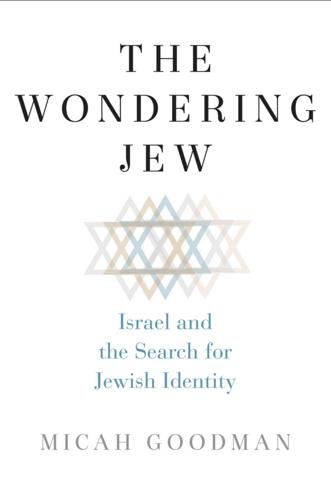
The Wondering Jew: Israel and the Search for Jewish Identity
by
Micah Goodman
Published 10 Nov 2020
I remember well those nights with Commander Nachshon when he made me run with heavy equipment on my back up and down a hill over and over again. Twelve years later, I found myself facing Commander Nachshon again. I had just finished teaching a lesson at the Hebrew University of Jerusalem. As I was walking down the corridor at the Mount Scopus campus talking to students about some issues that had come up in the lesson, I saw him. He was a first-year philosophy student. I approached him cautiously, said hello politely, and quickly went on my way. When I noticed that my heart rate was rising, I asked myself what was happening to me. Could it be that I was still afraid of the man who had been my commander in basic training twelve years earlier?
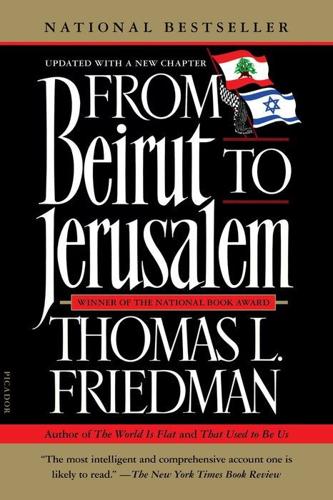
From Beirut to Jerusalem
by
Thomas L. Friedman
Published 1 Jan 1989
Ann said she wanted to come, too, and bring along our two-month-old baby, Natalie, to make it a family outing. We decided to go to one of our favorite restaurants, the buffet at the Inter-Continental Hotel, which is located in East Jerusalem atop the Mount of Olives. Ann drove and the two girls sat in the back seat. As our little Daihatsu chugged slowly up Mount Scopus, a teenage Palestinian suddenly stepped out from behind a wall, stood in front of us, took careful aim, and threw a stone at Ann’s face. It shattered the windshield into a spiderweb, but fortunately did not penetrate the glass. Orly saw the whole thing and began screaming hysterically from the back seat.
…
Kerem, Andre Kerr, Malcolm Kfar Kassem Kfar Saba Khalaf, Ramsi Khalaf, Rosanne Khalaf, Salah (Abu Iyad) Khalaf, Samir Khalef, Karim Khalife, Iman Khalil, Samir Ibrahim Khan Yunis Khartoum Khomeini, Ayatollah Khouri, Bishara al- Khouri, Michel Kibbutz Degania Kibbutz Hahotrim Kibbutz Yad Mordechai Kibbutz Yodfata Kifner, John Kilburn, Peter Kimche, David Kim Il Sung Kirschen, Ya’akov (Dry Bones) Kiryat Arba Kissinger, Henry Klinghoffer, Leon Knesset Koleilat, Ibrahim Koleilat, Rima Kollek, Teddy Kook, Abraham Isaac Kook, Zevi Judah Koppel, Ted Korean War Krelitz, Reb Avram Yeshayau Kura Kurds Kuttab, Daoud Labadi, Mahmoud Laila, Abu Landau, Moshe Landau, Uzi Landau Commission Lapkin, Teddy Lausanne Lawzi, Salim al- Lebanon “Letter to an American Friend” Leviathan (Hobbes) Levin, Jeremy Levinger, Moshe Levy, Avi Lewis, Bernard Libya Lior, Itzhak “Little Station Treblinka, The” Lloyd George, David Lorberbaum, Menachem Lutfi Ib-Maslem, Hashem Ma’ariv Maccabi Tel Aviv “MacDavid’s” McFarlane, Robert McGrory, Mary Machiavelli, Niccolò Mahjub, Mohammed Mahne Yehuda Majdanek death camp Manchester Guardian Manoukian, Antranik Mansdorf, Amos Margalit, Avishai Markowitz, Herman Maron (monk) Marxist Democratic Front for the Liberation of Palestine Mashghara Mashhadi, Muhyi Abd al-Husayn al- Mattar, Mohammed “Me and My Surfboard” Mea Shearim Mecca Medina, José Meir, Golda Meir, Yehuda Mercaz ha-Rav yeshiva Meridor, Dan Metulla Mifgash Beth El—Samir Mikdaad, Ilham Dahir Mikdadi, Lina Mike (barber) Minneapolis, Minn. Mitzna, Amram “Mi Yivne Bayit” Mohsen, Alia Mohsen, Zuhair Moment Monday Morning Monitin Moon, Keith Mordechai, Yitzhak Mortimer, Edward Moses Moses, Ofra Mount Lebanon Mount Scopus Mubarak, Hosni Mugrditchian, Myrna Muhammad Muhammad, Ali Nasir Murabitoon Musawi, Hussein Muslim Brotherhood Mussawi, Sayyid Abbas al- “My Neighbor, My Enemy” (Friedman) Nabatiya Nabih (merchant) Nablus Nadia (maid) Najm, Munzer Najwa (researcher) Naor, Areyh Narkiss, Uzi Nasif, Mohammed Nasser, Gamal Abdel Nawaf, Muhammad Nazzal, Yousef Neeman, Yuval Netanyahu, Benjamin Neve Tzuf New Jersey, U.S.S.

Goliath: Life and Loathing in Greater Israel
by
Max Blumenthal
Published 27 Nov 2012
But they never came back. Instead, goon squads from the lower-class neighborhood of Nahla’ot descended on Sheikh Badr to loot and vandalize the homes. After being briefly driven away by Haganah troops, the vandals returned to steal and torch whatever remained of the empty village. From his office in nearby Mount Scopus, Hebrew University Rector Judah Magnes watched the looting in Sheikh Badr with horror. Born in San Francisco and educated at the University of Cincinnati and Berlin University, Magnes began his career as a Reform rabbi in New York City. He cofounded the American Jewish Committee and was the guiding force during World War I behind the creation of the American Jewish Joint Distribution Committee, the chief international Jewish welfare agency.
…
On April 12, following the massacre by right-wing Zionist militias of over one hundred Arab civilians in Deir Yassin, Magnes wrote in his diary: “For more than a generation I have been pleading for peace, conciliation, understanding. How can I not and stand before the world and say: ‘Friends, stop the bloodshed. Understanding is possible.’ This is the moment I have been preparing for all these years.” The following day, thirty-four members of his staff at Hebrew University were killed in an Arab reprisal attack on Mount Scopus. In one last desperate maneuver, Magnes set off for Washington to lobby Secretary of State George Marshall and President Harry Truman to put Palestine under an American trusteeship that would hold Jewish and Arab provinces together in a federal union. He urged the United States to immediately impose military sanctions to stymie what he called “the Jewish war machine.”
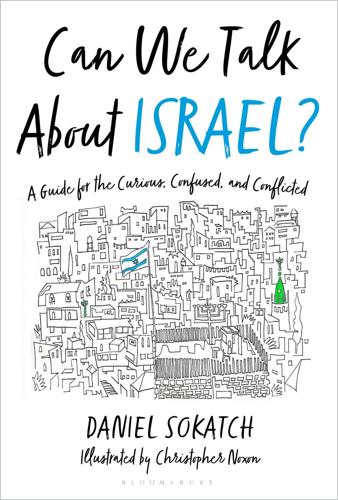
Can We Talk About Israel?: A Guide for the Curious, Confused, and Conflicted
by
Daniel Sokatch
Published 18 Oct 2021
When the fighting stopped, Israel, having successfully repulsed the invading Arab armies, held 78 percent of the territory of historic Palestine, more than half again as much as it had been allocated in the UN partition plan. Jordan held the West Bank and East Jerusalem (with the exception of an Israeli-held enclave at Mount Scopus, site of the Hebrew University campus); Egypt held Gaza. The Palestinians held nothing. The victory came at a high cost: almost 6,400 Israelis were killed, about 1 percent of the population. Arab casualties were at least as high. About 700,000 Palestinians were expelled or fled from their homes in what is now Israel.
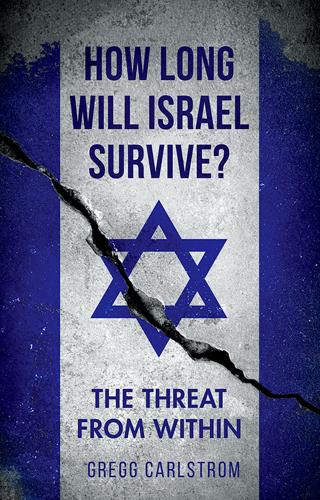
How Long Will Israel Survive Threat Wthn
by
Gregg Carlstrom
Published 14 Oct 2017
But atop the plateau is also Al-Aqsa mosque, Islam’s third-holiest, and the Dome of the Rock, where Muslims believe Mohammed made his “night journey”, ascending to heaven on a winged horse. Elsewhere in the Old City, and radiating outward in neighborhoods like Silwan and Sheikh Jarrah, there were Palestinians. All of this was in Israel’s hands, too. Around this time Moshe Dayan, the storied Israeli general, made his way to Mount Scopus, which offers a commanding view of the city. He leaned over to Col Uzi Narkis, the head of the army’s central command, and whispered a single question: “What do we need all this Vatican for?” The city of peace The holy city, the city of God, the city—all too ironically—of peace. Of the many names for Jerusalem, though, none is repeated so often as “our undivided, eternal capital”.
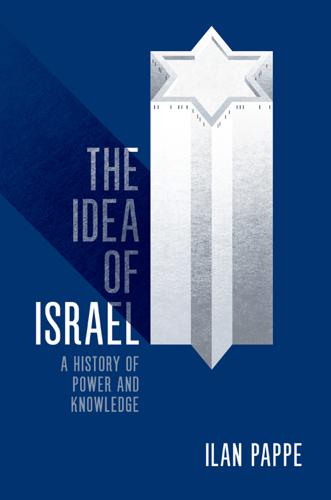
The Idea of Israel: A History of Power and Knowledge
by
Ilan Pappe
Published 30 Apr 2012
Bernstein, Constructing Boundaries. 25 Shulamit Carmi and Henry Rosenfeld, ‘The Emergence of Militaristic Nationalism in Israel’, International Journal of Politics, Culture and Society, 3: 1, (1989), pp. 5–49. 26 Uri Ben-Eliezer, The Making of Israeli Militarism, Bloomington, IN: Indiana University Press, 1998. 27 Yagil Levy, Israel’s Materialist Militarism, New York: Lexington Books, 2007. 28 Hagit Gur-Ziv, Statements on Silence: The Silence of Israeli Society in the Face of the Intifada, Tel Aviv: The Centre for Peace, 1989 (Hebrew); Nurit Peled-Elhanan, Palestine in Israeli School Books: Ideology and Propaganda in Education, London and New York: I.B. Tauris, 2012; Diana Dolev, ‘Academia and Spatial Control: The Case of the Hebrew University Campus on Mount Scopus, Jerusalem’, in Haim Yacobi, Constructing a Sense of Place: Architecture and the Zionist Discourse, London: Ashgate, 2004, pp. 227–45. An important figure in this trend was Rela Mazali, and one of her recent contributions is ‘A Call for Liveable Futures’, Huffington Post, (25 June 2010). 29 Uri Ram, Israeli Society. 30 Ibid. 31 Shoshana Madmoni-Gerber, Israeli Media and the Framing of Internal Conflict: The Yemenite Babies Affair, New York: Palgrave Macmillan, 2010. 32 For Zvi Efrat’s work in English, see the book he co-authored with Meron Benvenisti, Nadav Harel, Gideon Levy et al., A Civilian Occupation: The Politics of Israeli Architecture, London: Verso, 2003. 33 Alexander Kedar, ‘The Legal Transformations of Ethnic Geography: Israeli Law and the Palestinian Landholder, 1948–1967’, Journal of International Law and Politics, 33: 4, (2001), pp. 923–1,000. 34 Haim Bereshit, ‘Givat Aliya as a Metaphor: Three Aspects’, Theory and Criticism, 16, (2000), pp. 233–8 (Hebrew). 35 Ilan Gur-Ze’ev, ‘The Thirty-First Floor: The University Tower and the Phallocentrism of Zionism’, Theory and Criticism, 16, (2000), pp. 239–43 (Hebrew). 36 Jonathan and Daniel Boyarin, Powers of Diaspora: Two Essays on the Relevance of Jewish Culture, Minneapolis, MN: University of Minnesota Press, 2002; and for more on Hever, see Honig-Parnass, False Prophets, p. 197. 37 Sharon Rotbard, White Cities, Black Cities, Tel Aviv: Babel, 2005 (Hebrew). 38 John Arthur and Amy Shapiro, ed., Campus Wars: Multiculturalism and the Politics of Difference, Boulder, CO: Westview, 1994. 39 See Tamara Traubman, ‘The Ratio of Mizrachim in the Academia’, Haaretz, (18 October 2007).
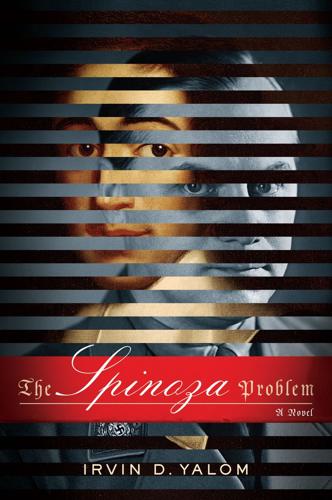
The Spinoza Problem
by
Irvin D. Yalom
Published 6 Mar 2012
In Palestine, at about the same time as the unveiling of this plaque, Joseph Klausner, the renowned historian and later a candidate in Israel’s first presidential election, delivered a speech at Hebrew University in which he declared that the Jewish people had committed a terrible sin in excommunicating Spinoza; he called for a repudiation of the idea that Spinoza was a heretic. He ended, “To Spinoza, the Jew, we call out . . . from atop Mount Scopus, out of our new sanctuary—the Hebrew University of Jerusalem—the ban is rescinded! Judaism’s wrongdoing against you is hereby lifted, and whatever was your sin against her shall be forgiven. Our brother are you, our brother are you, our brother are you!” In 1956, the three-hundredth anniversary of Spinoza’s excommunication, Heer H.

Buy Now, Pay Later: The Extraordinary Story of Afterpay
by
Jonathan Shapiro
and
James Eyers
Published 2 Aug 2021
That location was just a few hundred metres from another Jewish campus, Temple Emanuel, which had relocated from Woollahra. The liberal Emanuel Synagogue had been set up in 1939 after a wave of Jews fled Nazi Germany in the 1930s before the outbreak of war. Moriah College had come a long way since its foundational headmaster, Harold Nagley, arrived from Mount Scopus, a Jewish school in Melbourne, in 1968 and found Sydney’s Jewish community in the wilderness. In Melbourne, a strong post-Holocaust survivor community had grown among immigrants from Poland. They were more traditional than Sydney’s mostly Hungarian Jewish immigrants, many of whom were disenchanted with religion, after being scarred by their experience of war.
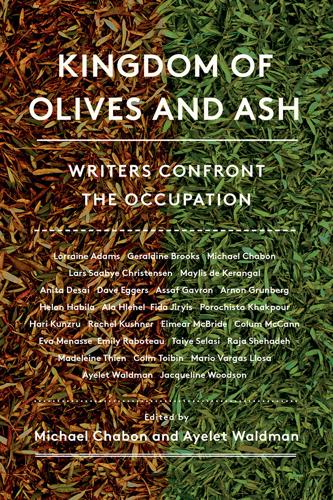
Kingdom of Olives and Ash: Writers Confront the Occupation
by
Michael Chabon
Published 29 May 2017
All those years that his father and grandfather roamed these hills grazing their goats, and they never realized that the real owners had yet to arrive. Two Orthodox boys, wearing kippas and black trousers and drip-dry shirts and scuffed thick-soled shoes. They stand on the wall at the viewpoint at the top of Mount Scopus, surveying the Jordan Valley far below. In the distance lies the Dead Sea, just a sliver of hazy gray blue. Nearer you can see a black ribbon of road, and the settlement of Ma’aleh Adumim. One of the boys laughs and begins to stride down the hill. The other, shivering slightly in the cold, slips on a green New York Jets sweatshirt.
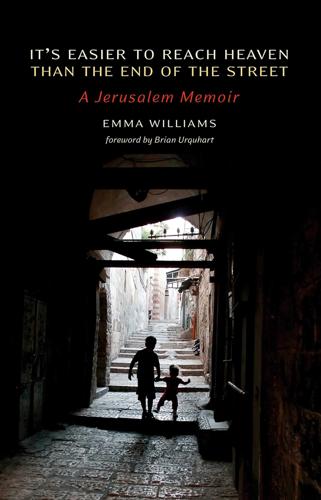
It's Easier to Reach Heaven Than the End of the Street: A Jerusalem Memoir
by
Emma Williams
Published 7 Nov 2012
I held the children while she filled warm pita with shredded lettuce, orbs of chickpea and spice, spoonfuls of salads and herbs, and a slathering of tahini. She looked down at the children’s waiting faces as she handed each one a delicious pocket of the new food, and then beamed at me. Was she one of the five? How was she now? Within a day there was more killing: students at Hebrew University on Mount Scopus. Nine young people dead and eighty-five wounded by a Hamas bomb planted in the student cafeteria. Resilience and reactions varied. Some people, by nature or experience, or a combination of the two, were more resilient than others. There were Israelis who wouldn’t visit us in our house, Israelis who wouldn’t visit Jerusalem at all, and Israelis who stood in protest in front of IDF bulldozers.
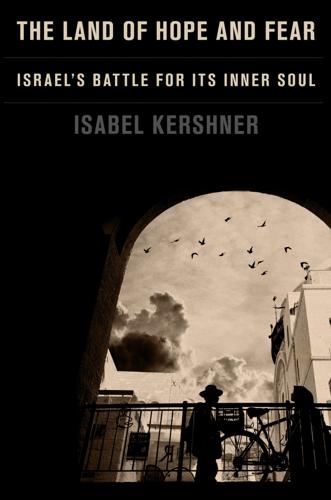
The Land of Hope and Fear: Israel's Battle for Its Inner Soul
by
Isabel Kershner
Published 16 May 2023
Straight ahead was Mount Zion, the traditional site of King David’s tomb; the walled Old City, with its iconic golden cupola of the Dome of the Rock marking out the Temple Mount; and the Palestinian neighborhoods, their gray houses and apartment blocks seemingly piled on top of one another and threatening to tumble down the hillsides. To the east rose the ridges of Mount Scopus and the Mount of Olives, with their three hallmark towers and ancient Jewish graveyard, the gilded onion-domed Church of Mary Magdalene, and the Garden of Gethsemane; and to the north and west the urban sprawl of the new city. The grassy slopes below the promenade took on the atmosphere of a fete.
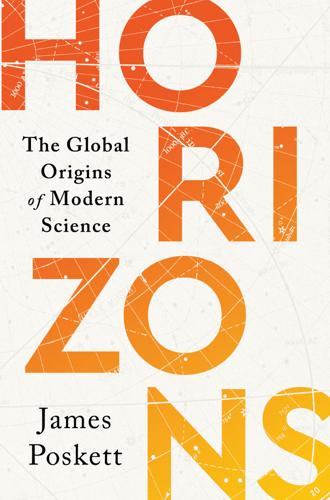
Horizons: The Global Origins of Modern Science
by
James Poskett
Published 22 Mar 2022
As a young boy, he would accompany his father on botanical field trips, particularly around the Sea of Galilee, learning the basics of plant taxonomy. In 1946, Zohary entered the Hebrew University of Jerusalem, studying botany in the hope of following in his father’s footsteps. His degree, however, was interrupted by the outbreak of the Arab–Israeli War in 1948. The original campus of the Hebrew University of Jerusalem, located on Mount Scopus, had to be evacuated, as it was overrun by Jordanian troops. Zohary himself managed to escape, and went on to serve in the war, but one of his best friends was killed. Once the fighting was over, Zohary returned to complete his degree at the new university campus, located at Givat Ram.82 At this point, Zohary’s scientific knowledge was not so different from his father’s.
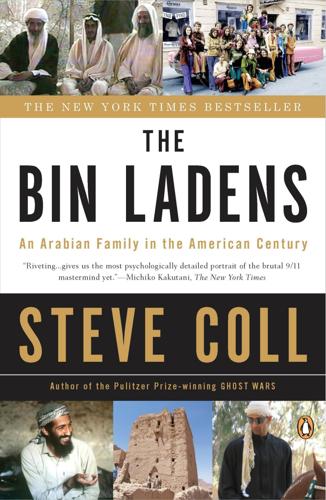
The Bin Ladens: An Arabian Family in the American Century
by
Steve Coll
Published 29 Mar 2009
It was a spacious, white-stoned, red-roofed building of the sort that sprouted all around the city during the 1950s and early 1960s. It had a spectacular view of Jerusalem in the distance, as well as sandy ground and white-stone buildings nearer at hand. The cease-fire line then prevailing between Israel and Jordan was just a short walk down the street. To the east was Mount Scopus, a U.N.-controlled no-man’s-land, and to the south lay the Israeli neighborhoods of Givat Ha-Mivtar and Ramat Eshkol. Jerusalem’s old Qalandia airport was a short drive away, from where Bin Laden could fly directly to Jeddah, Mecca, or Medina on his private plane. Bin Laden may have married at least one Palestinian wife during the years he worked on the Jerusalem project, but he stayed in his Jerusalem house mainly on short-term visits; it was otherwise occupied by his servants, company aides, and a guard who kept watch over his cars, according to the house’s current owner, a Christian Arab who is a citizen of Israel and a former owner, a retired Israeli naval officer.23 Israel seized East Jerusalem from Jordan in the 1967 Arab-Israeli war; after that, Bin Laden never returned.
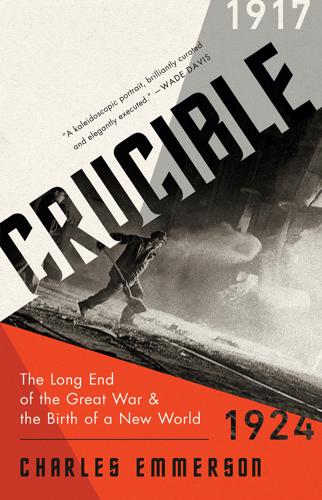
Crucible: The Long End of the Great War and the Birth of a New World, 1917-1924
by
Charles Emmerson
Published 14 Oct 2019
‘The common people know no nationalism’, he jots down in his travel diary after spending time first with a Jewish settler and his Arab friend, then with an Arab writer and his German wife. Surely this is reason for hope? The highlight of Albert’s visit to Palestine is a lecture on relativity in the auditorium of the British Mandate Police School on Mount Scopus, billed as the first scientific lecture in the temporary halls of the new Hebrew University. In order to ensure he is best understood by a mixed audience consisting of local Arabs and Jews as well as the British, Albert speaks in French. Towards the end of his trip he visits a kibbutz by Lake Tiberias, set up by Zionists inspired by the principles of socialism.